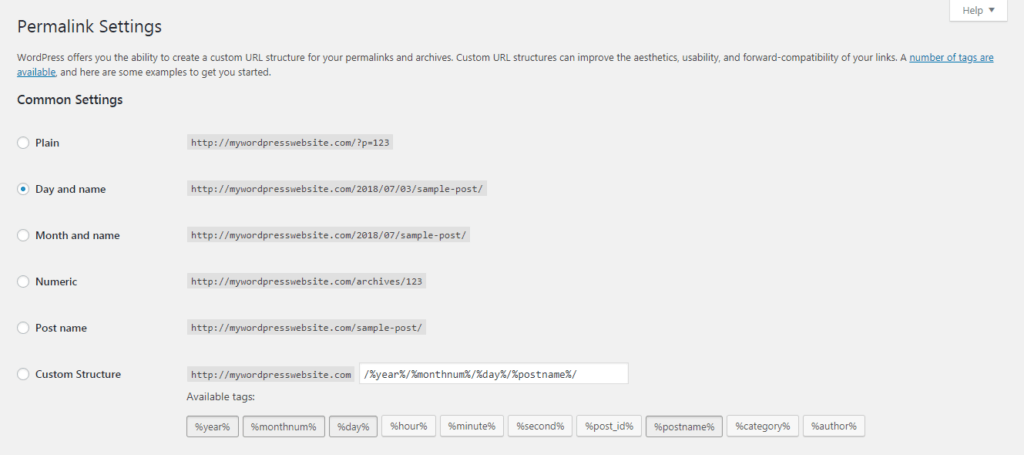Wie Sie die SEO Ihrer WordPress-Website optimieren

Inhalt
Unabhängig davon, welche Art von Website Sie betreiben, ist es wichtig, dass Sie sich auf die Suchmaschinenoptimierung (SEO) konzentrieren. WordPress kommt mit vielen leistungsstarke SEO-Toolssowie eine große Auswahl an verfügbaren Plugins. Das bedeutet, dass Sie die potenzielle Reichweite Ihrer Website möglicherweise nicht voll ausschöpfen.
Glücklicherweise ist die SEO-Optimierung von WordPress nicht so schwierig, wie Sie vielleicht erwarten. Es wird brauchen ein wenig Zeit und Geduld, aber das Ergebnis ist eine bessere Platzierung in den Suchergebnissen und eine Steigerung Ihres organischen Suchverkehrs. Darüber hinaus kann die Verbesserung Ihrer SEO Ihnen einen Vorteil gegenüber Ihren Konkurrenten verschaffen.
In diesem Artikel werden wir eine Reihe von wichtigen SEO-Techniken für Ihre WordPress-Website vorstellen. Legen wir los!
Warum Suchmaschinen-Optimierung (SEO) wichtig ist
Bevor wir unsere Tipps zur SEO-Optimierung vorstellen, sollten wir uns ein paar Minuten Zeit nehmen, um darüber zu sprechen, warum dieses Thema so wichtig ist. SEO ist eine Gruppe von Techniken die dazu beitragen, dass Ihre Website in Suchmaschinen wie Google besser platziert wird.
Dies ist von entscheidender Bedeutung, um das Wachstum und die Sichtbarkeit Ihrer Website zu verbessern. Eine Studie hat zum Beispiel ergeben, dass der erste Platz in den Suchmaschinen 53% von allen organischer Suchverkehr. Wenn Ihre Seiten schlecht platziert sind, entgehen Ihnen wahrscheinlich viele potenzielle Besucher.
Da sich jedoch immer mehr Unternehmen des Nutzens von SEO bewusst werden, wird das Feld immer dichter. Umso wichtiger ist es, auch die "kleinen Dinge" richtig zu machen. Glücklicherweise verfügt WordPress über viele integrierte Tools und Plugins für die SEO-Optimierung.
Wie Sie die SEO Ihrer WordPress-Website optimieren können (5 wichtige Tipps)
Im weiteren Verlauf dieses Artikels stellen wir Ihnen fünf grundlegende Tipps vor, mit denen Sie die SEO Ihrer WordPress-Website verbessern können. Außerdem stellen wir Ihnen einige praktische Lösungen vor, die Ihnen die Arbeit erheblich erleichtern können.
1. Konsistente Permalinks verwenden
Haben Sie schon einmal versucht, ein altes Lesezeichen zu besuchen, und festgestellt, dass der Link nicht mehr funktioniert, obwohl die Website noch aktiv ist? Permalinks sind permanente Links zu den Inhalten Ihrer Website, z. B. zu Blogbeiträgen und Seiten:

Es ist wichtig, diese konsistent zu halten, damit interne und externe Links zu Ihrer Website aktiv bleiben. Permalinks ermöglichen es den Besuchern nicht nur, auf Ihrer Website zu navigieren, sie sind auch sehr nützlich für die Suchmaschinenoptimierung.
Standardmäßig sind die WordPress-Permalinks einem Format folgen das so aussieht: sitename.com/jahr/monat/tag/blog-post-title. Diese werden oft als "hässliche Permalinks" bezeichnet, weil sie oft lang und unübersichtlich sind.
Für die Suchmaschinenoptimierung ist es viel besser, "schöne" Links zu verwenden, die kurz und beschreibend sind. Sie können Wählen Sie Ihre Permalink-Struktur in Ihren WordPress-Einstellungen, und verwenden Sie Pretty Links zur Optimierung Ihrer URLs weiter.
2. Schlüsselwörter zu Ihren Permalinks hinzufügen
Schlüsselwörter sind Begriffe, nach denen Menschen auf Websites wie Google suchen. Es ist wichtig, Schlüsselwörter nicht nur in Ihren Inhalten, sondern auch in Ihren Links zu verwenden. Auf diese Weise ist es wahrscheinlicher, dass die Suchmaschinen Ihre Seiten bei relevanten Suchanfragen hoch einstufen.
Vor allem sollten Sie Long-Tail-Keywords verwenden. Dabei handelt es sich um kurze Suchbegriffe, die in der Regel weniger Suchanfragen nach sich ziehen, aber spezifischere Ergebnisse liefern. Außerdem haben sie in der Regel einen höheren Umrechnungskurs.
Sie können geeignete Schlüsselwörter mit einem Tool wie Google Keyword-Planer. Wählen Sie dann die Permalink in der rechten Seitenleiste für jeden Beitrag oder jede Seite:

Dort können Sie einen benutzerdefinierten Link erstellen, der das Long-Tail-Keyword enthält, das für den Inhalt am relevantesten ist.
3. Backlinks einholen
Eine weitere wichtige SEO-Technik ist der Aufbau von Backlinks. Das sind Links auf anderen Websites, die zu Ihrer Website zurückführen. Sie kann eine positive Wirkung haben Denn wenn viele Websites auf Ihre Website verlinken, gehen die Suchmaschinen davon aus, dass Ihre Inhalte von hoher Qualität sind.
Einige der besten Möglichkeiten zum Aufbau von Backlinks sind Gastbeiträge auf anderen hochwertigen Websites und das Hinterlassen von informativen Kommentaren auf relevanten Blogs. Sie können auch Pretty Links verwenden um mehr Backlinks zu fördern.
Standardmäßig fügen die meisten sozialen Netzwerke den Links ein "nofollow"-Attribut hinzu, was bedeutet, dass sie nicht als Backlinks zählen. Mit Pretty Links erstellte URLs werden jedoch immer mit dem Attribut "follow" versehen, es sei denn, Sie anders angeben. Das bedeutet, dass alle Ihre Inhalte in den sozialen Medien dazu beitragen werden, die Suchmaschinenoptimierung Ihrer Website zu verbessern.
4. Spam-Kommentare blockieren
Als Nächstes können Sie Ihre Website auch durch das Blockieren von Spam-Kommentaren optimieren. Diese sind für Ihre Besucher lästig und können sich negativ auf die Professionalität Ihrer Website auswirken. Außerdem können Spam-Kommentare tatsächlich Ihr SEO schädigen.
Böswillige Quellen nutzen Kommentare oft als Vehikel für Backlinks. Zu viele Links zu minderwertigen Seiten haben schadet der Platzierung auf Ihrer Seiteund zwar unabhängig davon, ob Sie diese Links persönlich hinzugefügt haben oder nicht. Daher ist das Blockieren unerwünschter Links von entscheidender Bedeutung, um zu verhindern, dass sich Spam auf Ihrer Website breit macht und Ihre Sichtbarkeit beeinträchtigt.
Glücklicherweise ist es einfach, Spam-Kommentare zu blockieren, indem man die Akismet oder Jetpack-Plugins in WordPress. Wenn Sie eine persönliche Website ohne bezahlte Werbung oder E-Commerce-Aktivitäten haben, ist Akismet eine ausgezeichnete kostenlose Option. Für geschäftliche Websites, Jetpack ist eine kostengünstige Premium-Lösung, die eine automatische Spam-Filterung beinhaltet.
5. Erstellen einer XML-Sitemap
Nicht zuletzt ist die Erstellung einer XML-Sitemap eine einfache Möglichkeit, die SEO Ihrer Website zu verbessern. Dabei handelt es sich im Wesentlichen um eine Liste aller Seiten auf Ihrer Website, zusammen mit Informationen darüber, wie sie miteinander verbunden sind.
Eine Sitemap hilft Suchmaschinen, Sie leicht zu scannenr Seitenund sammeln die Informationen, die sie benötigen, um Ihre Inhalte genau zu bewerten. Die Erstellung eines solchen Systems von Grund auf wäre eine Herausforderung, aber es gibt zahlreiche Lösungen, die dies für Sie übernehmen können.
Zum Beispiel sind die kostenlosen Versionen von Jetpack und Yoast SEO sind mit XML-Sitemap-Tools ausgestattet. Das bedeutet, dass das Hinzufügen einer Sitemap zu Ihrer WordPress-Website nur ein paar Minuten dauert. Danach ist es wichtig, dass Sie Ihre Sitemap an folgende Stellen übermitteln Google Suchkonsoledamit Google weiß, wo sie zu finden ist.
Schlussfolgerung
Die Verbesserung der Suchmaschinenoptimierung Ihrer Website kann für ihren Erfolg entscheidend sein. Die gute Nachricht ist, dass es viele einfache Schritte gibt, die Sie unternehmen können, um eine WordPress-Website für SEO zu optimieren und mehr Besucher anzuziehen.
Wie wir gezeigt haben, gibt es fünf einfache Möglichkeiten, die SEO Ihrer WordPress-Website zu verbessern:
- Konsistente Permalinks verwenden
- Hinzufügen von Long-Tail-Schlüsselwörtern zu Ihren Links
- Aufbau von Backlinks
- Blockieren von Spam-Kommentaren
- Erstellen einer XML-Sitemap
Haben Sie Fragen zur Optimierung Ihrer WordPress-Website für Suchmaschinen? Lassen Sie es uns im Kommentarbereich unten wissen!
Cathryn Cade
31. Mai 2019
Vielen Dank für diesen informativen Artikel. Ich weiß schon lange, dass ich das tun muss, aber ich hatte keine Ahnung, wie. Ich freue mich immer noch nicht auf die Aufgabe, aber wenigstens habe ich jetzt Anhaltspunkte.
Sven Özel
20. Juni 2019
Ich fand es besonders nützlich zu erfahren, dass Yoast SEO eine XML-Sitemap erstellt, das ist eine echte Zeit- und Lebensersparnis! Danke!